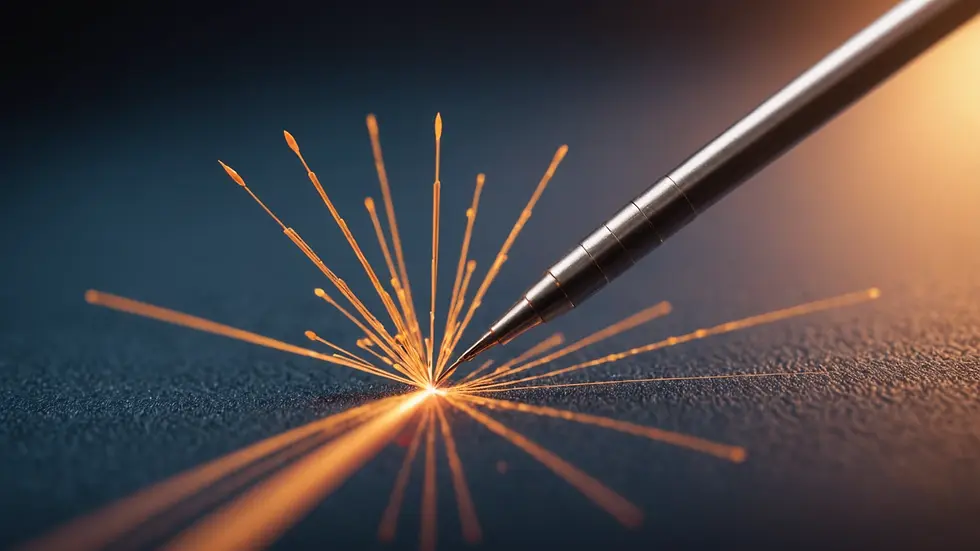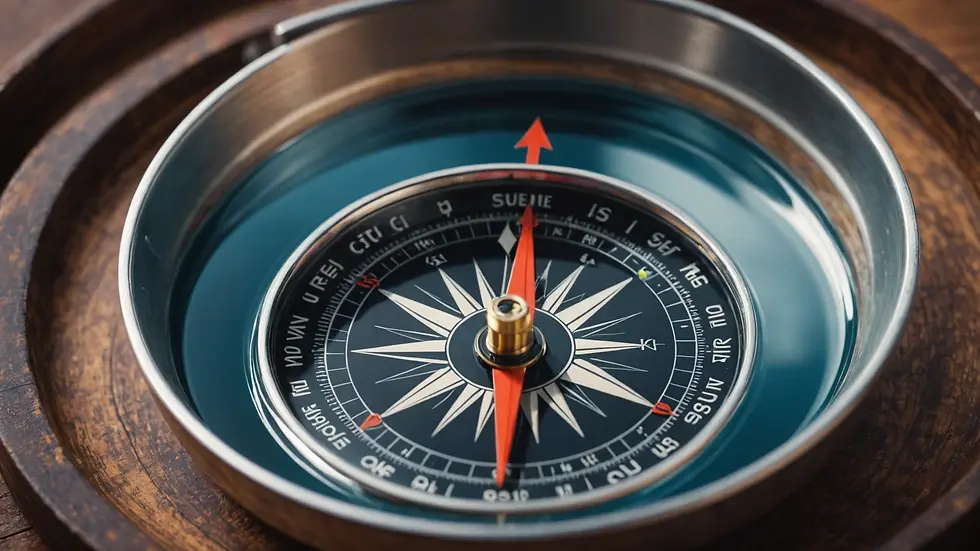How to Make Your Own Compass
- Kim Williamson

- Dec 8, 2024
- 3 min read
Navigating the wilderness or even a local park is much easier with a reliable compass. What if I told you that you could create your own compass using common household items? This DIY project is not only enjoyable but also educational. You will learn about magnetism and navigation principles while crafting your own compass. In this article, we will walk you through the simple steps to create a functional compass, so you're ready to find your way the next time you venture outdoors.
Why Make Your Own Compass?
Making a compass from scratch comes with several notable advantages. First, it offers a hands-on approach to understanding basic principles of the natural sciences, particularly magnetism. Surprisingly, studies show that practical activities can improve retention of information by as much as 75%. Additionally, being able to create a compass could be invaluable in situations where traditional navigational tools are not available. Finally, this DIY project provides a great opportunity to connect with nature and explore your surroundings.
Materials Needed
Before we dive into the crafting process, gather the following items:
A sewing needle
A small magnet (preferably one from your refrigerator)
A piece of cork or a small dish filled with water
Pliers (optional, for easier handling)
A flat surface for your workspace
With these materials gathered, you are ready to create your own compass!
Step-by-Step Instructions
Step 1: Magnetizing Your Needle
To start, you need to magnetize your needle. Take your sewing needle and rub it on the magnet.
Direction: Always rub the magnet in the same direction, moving from one end of the needle to the other.
Tip: For optimal magnetization, repeat this process about 20 to 30 times.
This action aligns the iron particles in the needle, giving it magnetic properties that are essential for your compass.

Step 2: Preparing the Cork
Next, let’s prepare the cork. If cork is unavailable, a bottle cap can serve as a substitute.
Cutting: Use pliers to create a small slit in the cork, just deep enough to hold the needle.
Inserting the Needle: Carefully insert the magnetized needle through the cork.
By using cork, you allow the needle to pivot freely and align with Earth's magnetic field.
Step 3: Setting Up Your Compass
After inserting the needle, it’s time to set up your compass:
Water Method: Fill a shallow dish with water and gently float the cork with the needle on the surface. The needle will settle, aligning itself with magnetic North. Interestingly, a study shows that the Earth's magnetic field is about 0.5 gauss, strong enough to influence your needle.
Land Method: If you are outdoors, simply place the cork on flat ground.
In both cases, watch as the needle moves and eventually aligns itself in a north-south direction.

Step 4: Reading Your Compass
To read your compass, note which direction the needle points. One end of the needle indicates magnetic north, allowing you to identify cardinal directions such as:
North
South
East
West
Keep in mind that this DIY compass may not be perfectly accurate depending on your location, as the Earth's magnetic field can vary
Enhancing Your Compass-Making Skills
Here are tips to elevate your compass-making experience:
Accuracy: For better accuracy, keep metal objects away from your compass during use. These can disrupt the magnetic field and lead to inaccurate readings.
Testing Skills: Before embarking on a long hike, practice with your compass in a familiar area. This will help you feel more comfortable using it when you are in an unfamiliar location.
Exploration: Try various materials or designs in your compass-making projects. For instance, experiment with different shapes of corks or other flotation devices to see if this impacts performance.
Troubleshooting Common Issues
If the needle does not align properly or seems stuck, consider these troubleshooting steps:
Ensure that your needle is thoroughly magnetized. If in doubt, rub it on the magnet again.
In the water method, make sure the cork is floating freely without any interference.
Avoid using your compass near electronic devices or metal objects, as they can distort its accuracy.
Wrapping Up
Creating your own compass is an exciting project that equips you with practical skills for outdoor adventures. By following the steps laid out in this article, you now have the ability to make a functional compass with simple materials.
Next time you explore the great outdoors, you can do so with confidence, knowing you crafted your own navigational tool. So gather your materials, head outside, and start your compass-making adventure today!
Happy navigating!








Comments